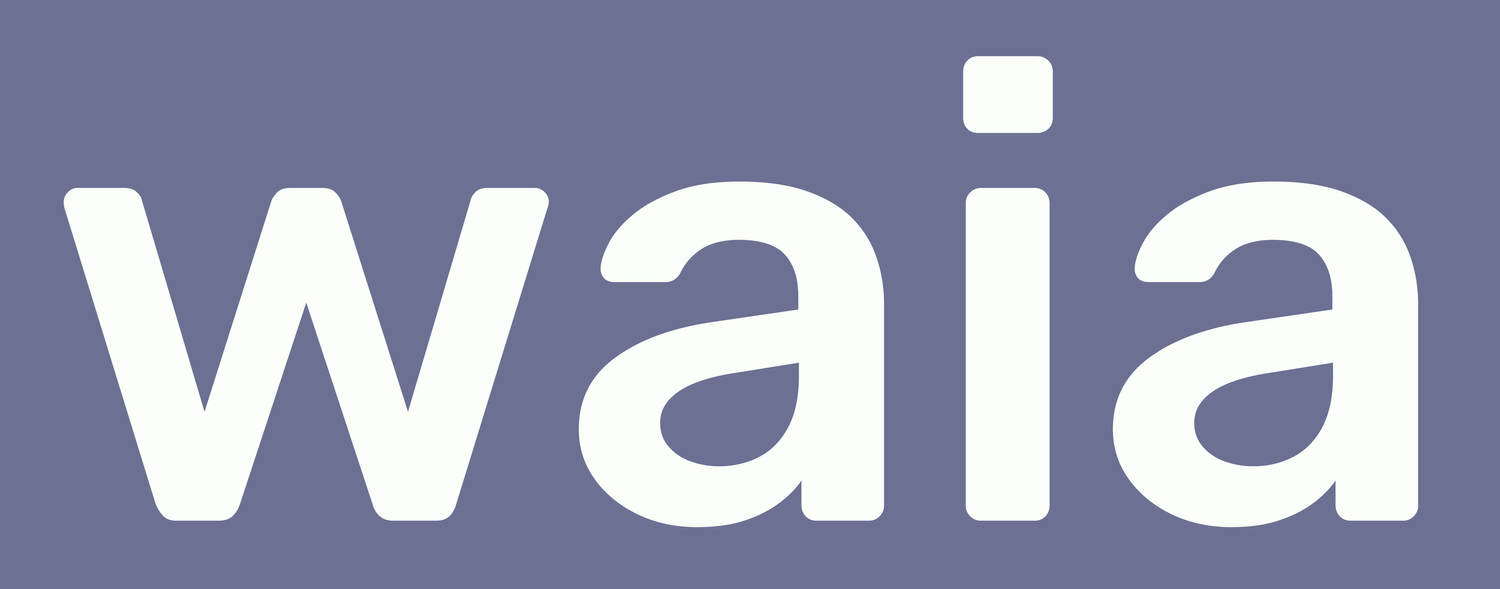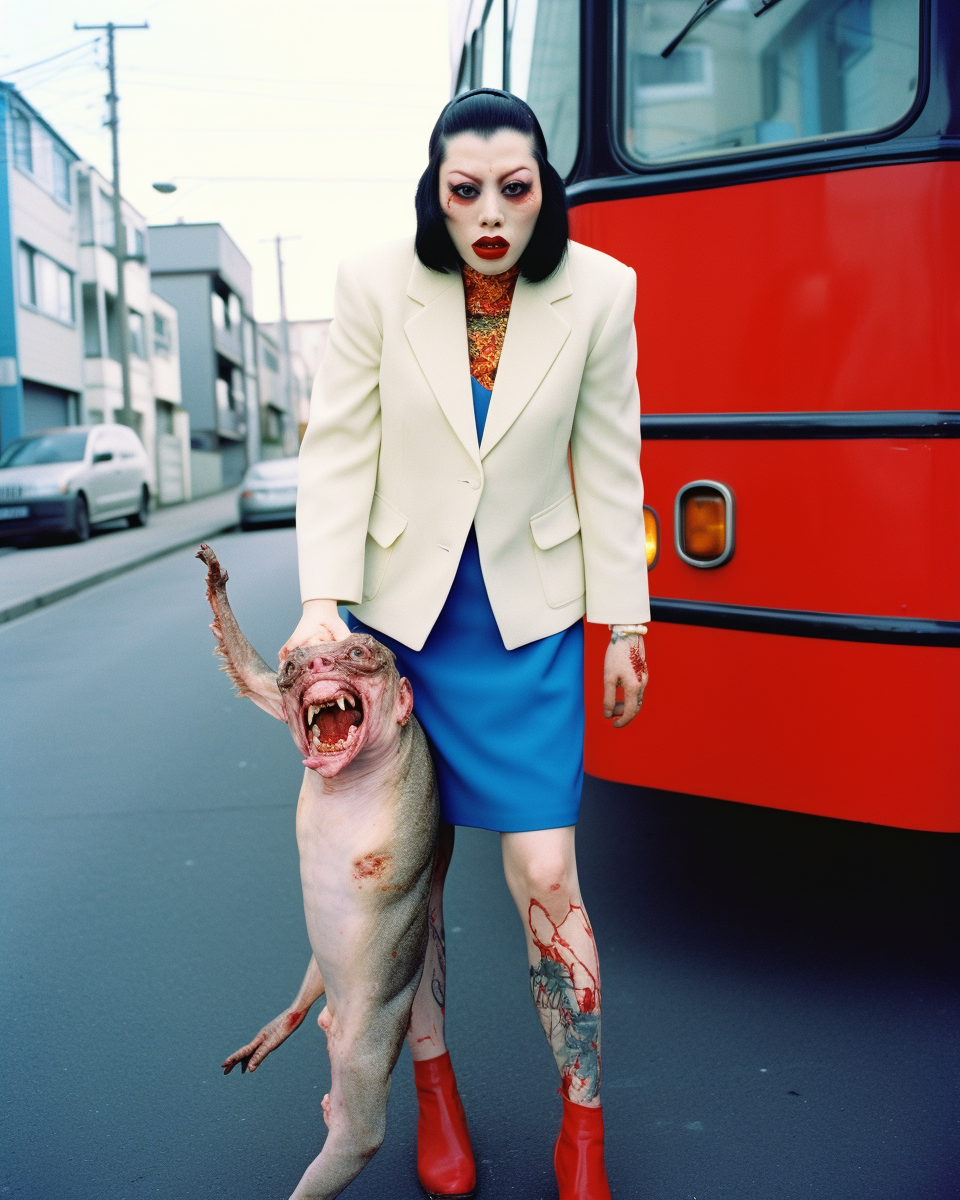Meet Guppy!
Introducing Guppy (IG: @alsoguppyme), a dynamic AI artist and creative director from Singapore, whose art is distinguished by its striking fusion of human and animal imagery. Her unique creations feature wild, otherworldly creatures that often exude a sense of unease, challenging viewers to explore deeper themes of self and alter ego. Guppy's artistic journey, evolving from photography to AI in the fintech realm, has culminated in a distinct style marked by AI-generated video storytelling. Her work, rich in narrative and visual complexity, invites a closer look into the untamed aspects of her imagination. Dive into our exclusive interview to uncover the inspirations and processes behind Guppy's fascinating art.
Can you tell us a little bit about yourself and how you got interested in AI art?
My journey in art didn't follow the typical 'traditional' painting route. Instead, I pursued a path that resonated more with my creative aspirations. During my major in painting, I embraced photography, not as an experimental medium but as one that felt relevant and expressive at the time. For my graduation project, I showcased slides in a series of timed projections.
Finding financial stability as an artist was particularly tough, especially in the early days in Singapore. This reality nudged me towards the commercial arts and design fields, where I could apply my skillsets in a more commercially viable way.
About a decade ago, I made a shift, leaving the agency life to explore the world of tech start-ups. It's been a journey of constant learning and adapting. Now, I'm deeply involved in the Fintech industry, where AI plays a crucial role in the solutions we develop. My transition into AI art felt like a natural extension of this path and also answered the need to create. Bridging my foundational art background with the innovative technologies I work with today. AI art and design isn't just a professional endeavour for me; it's a new avenue for personal artistic expression, opening up uncharted territories in the art world.
Who or what are your artistic inspirations, and how do they influence your work?
Inspiration is everywhere! It can spring from a movie scene, a random conversation, or even just a passing thought. And, of course, the constant flow from the AI art community, with its evolving creations.
My artistic roots are in painting, and this background draws me to the works of masters like David Delacroix, Francis Bacon, Margaritte, and Lucian Freud. Their ability to blend beauty with a sense of disquiet influences my approach to art. It's about creating visuals that are aesthetically pleasing yet provoke thought or a subtle sense of unease.
In the realm of photography, my inspirations are Liu Heung Shing, Pierre and Gilles, and David Hockney. Each of them demonstrates the power of storytelling through a lens. Liu Heung Shing's journalistic eye for timing and relevance, Pierre and Gilles' surreal and vibrant portraits, and David Hockney's compositions show me the diverse ways one can capture and convey ideas. They inspire me to see beyond the obvious and to appreciate that a photograph can be more than just a well-framed picture – it can be a narrative, a statement, or a piece of art in itself.
How do you approach the creative process when working with AI?
The approaches vary greatly. Sometimes, it begins with a specific thought or a reaction to something that catches my attention. Other times, the process is entirely experimental, driven by curiosity and exploration.
I don’t stick to any set techniques. I've tried sketching ideas and feeding them into an AI tool like Midjourney, observing how it 'learns' from my input. I've also experimented with blending images to see the unexpected outcomes, particularly interested in what elements the AI chooses to retain or discard from each picture.
Currently, I'm navigating through a creative block. To find my way out, I often turn to reading or journaling. This helps me gain new insights and attain a clearer understanding of my thoughts, enabling me to craft a more coherent narrative.
The most striking difference is the speed – the creation process with AI is almost instantaneous. AI art is an amalgamation of what the machine has learned and how it reinterprets the prompts it receives. In this sense, each piece is not just a reflection of the artist but also of the community that contributes to the AI’s learning. It’s a collaborative (or borrowed) form of artistry that stands apart from traditional methods.
Can you share a specific moment that transformed your perspective on AI art?
Rather than singling out a specific piece that I'm most proud of, I'd like to share a work that symbolises a pivotal moment for me in AI art. This piece isn't just about the final product, but it represents the time when I realised that AI art was a journey I wanted to commit wholeheartedly.
How do you balance your work in AI art with other professional or personal pursuits?
It's a constant struggle! There's no secret formula to it. As for achieving 'balance,' I've found it's a very relative term. What feels balanced for one person might not be the same for another. So, I navigate this on a day-to-day basis, adjusting as needed.
How has working with AI in art influenced your mental and emotional wellbeing?
AI art is a complex experience for me. On one hand, it's incredibly cathartic; each successful render feels like a dopamine hit, a moment of elation. On the flip side, it can also be paralysing, especially when I'm stuck on developing a concept or pushing through a creative block. So, it oscillates between being good and bad.
In your opinion, how does AI redefine the concept of creativity and artistic agency, and how do you see it impacting the future of art?
In my view, AI is revolutionising the concept of creativity and artistic agency by democratising the art-making process. With AI, the playing field is levelled – it's not just about the traditionally 'gifted' individuals anymore. Everyone has an opportunity to engage in and contribute to the world of art. This inclusivity is transformative, opening doors to new voices and perspectives on art. In the future of art, creativity becomes more accessible and diverse.
For more of Guppy’s incredible work, make sure to visit her Instagram account: @alsoguppyme








